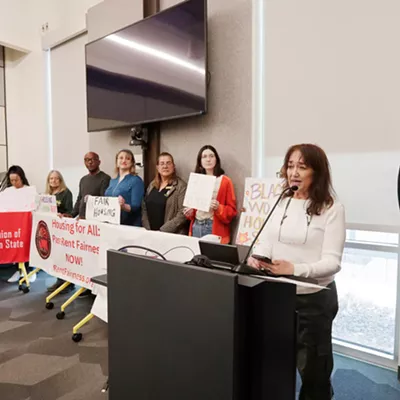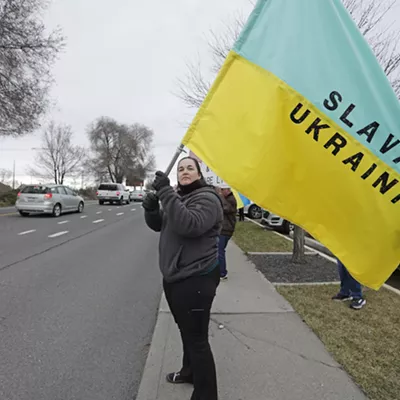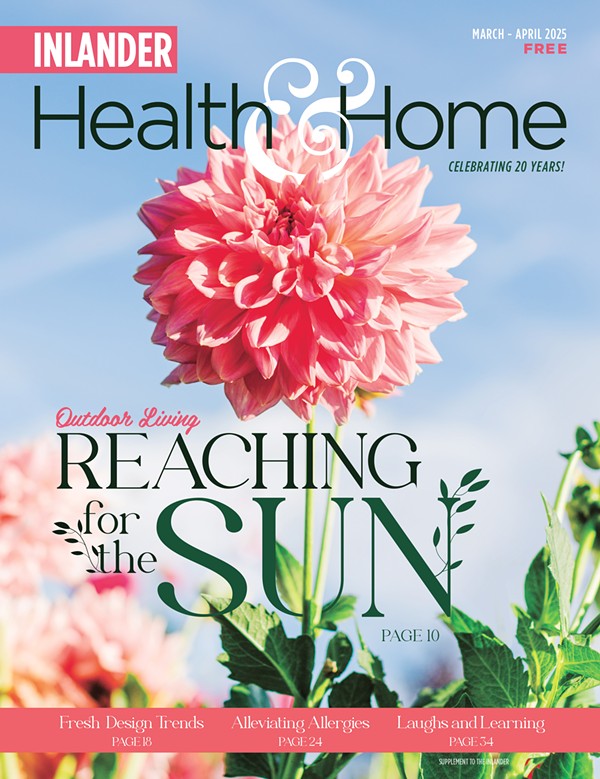His animals are part of an 11-year experiment -- mimicking the predator-prey relationship on part of the 1,200 acres he owns and leases. In practice, it's the way big mammals lived on this continent before the northern European management paradigm practice took hold.
Robinette gets jazzed explaining how grasslands were managed naturally with elk, antelope, deer and bison living in big herds and predators like grizzlies and wolves around the perimeter. The predators kept the grazers on the move and tightly bunched. The grass eaters got their bellies full quickly and were usually forced to move out of a grass area when the predators initiated a move, strike or kill.
"My idea is to run cows without hay," Robinette explains while rigging up high tensile electrical line to keep cows limited to wedges of grass. The practice controls the amount of time cows spend foraging in one place.
"It's all about watching the bite -- the number of times cows get to bite at the same plant -- and resting the grass," says Robinette, who has a graduate degree in sociology. For more than three years he has been the Eastern Washington coordinator for the Washington Sustainable Food and Farming Network, a group more commonly considered a west-side environmental group -- not a bastion for cattle ranchers and farmers.
Robinette is a cattleman with a social conscience and liberal take on environmental issues and agricultural practices. He leads WSFFN's biotech wheat campaign against the continual release of Roundup-ready wheat. He's also a graduate of the Land EKG workshop, a three-day intensive school that brings together ranchers, farmers, environmentalists and state agency experts to study rangeland practices.
"This workshop really brought to bear the fact that communication is important," Robinette says. "For the first two days, the cattlemen would go off by themselves. The fish and wildlife guys went off by themselves. But by the third day they were all together, on their hands and knees studying grasses and bugs and cowpies."
& lt;span class= "dropcap " & M & lt;/span & uch of what Robinette does in his "holistic cattle management" sounds counterintuitive to the average person and to some entrenched cattlemen. He runs a high number of cows and calves on small chunks of land for a short time -- it's called intensive grazing, keeping the cows concentrated on one plot, anywhere from one acre to 20.
The cows get four to 10 days or a few weeks on land, depending on the size and the soil moisture. "I believe that, based on evolution, grasses need chewing on to survive... biting the seed heads off generates more forage, more grass." The cows chew a variety of grasses while turning up earth and compacting soil. Then Robinette gets the cows off the land and lets it "rest" for a few weeks -- or in some cases, a year. The next year the grasses are taller, there's more plant and fauna biodiversity, and the soil is moister.
And a certain economic bottom line gets met under Robinette's management skills -- no supplemental feed and less energy expended because he doesn't use fertilizers to grow grass, and he uses less diesel fuel to get the job done.
"Seventy percent of all expenses in the cow business goes for supplemental feed," he says. "Where I'm not burning diesel, I'm burning shoe leather." Much of his time is spent moving around the tendrils of electrical wire -- with 5,800 volts of punch -- to keep the cows moving.
That's the key -- pushing up to 45 or 60 cows in an acre or two for four or five days of grazing. Keeping the animals from biting the same place every day for weeks at a time is the key to renewal. The roots get to grow, the grass stalks have structure left, and maximum photosynthesis takes place during the time when the most sunlight hits.
& lt;span class= "dropcap " & W & lt;/span & hat Robinette does on the Lazy R by replicating some of nature's patterns and grazing cycles isn't just a way to make more money. It's about caring for the land and the soil, and gauging the effects that "peak oil" and conventional unsustainable practices -- factory or industrial ag -- have on small- and medium-sized operations.
Biodiversity loss, caused by humans, is taking place at a faster rate than any time in history, and Robinette often cites this as he works around the state to educate -- and to learn what farmers and ranchers need to get through the paradigm shift necessitated by high fuel costs and global warming.
He has his guru: Allan Savory, a scientist originally from Rhodesia (now Zimbabwe), who now lives in New Mexico. Savory studied the effects of cattle ranching on the grass while working alongside game refuges and a wildlife preserve where a million or more wildebeests and zebra came into the wild area and gorged on plants. He saw that the grass inside his fence line was 6 inches high while the intensely grazed grasses in the preserve were 6 feet tall.
Savory -- a biologist, soldier, public servant, former member of Parliament, president of a political party, farmer, rancher, consultant -- drives home a point that innovators like Robinette consider seriously: Throughout human civilization there's been one recurring theme of "poor land means poor people, social upheaval, political unrest." Savory has said that farmers and ranchers are responsible for decimating more civilizations than armies. "Armies change civilizations," Savory says. "We farmers and ranchers destroy them, they never rise again. And I've been obsessed with this problem of why this is happening, why it's happened for 10,000 to 15,000 years, and why we've never been able to stop it."
Robinette has studied and adopted much of Savory's management skills. He's eking out a living working 80 heifers and 100 calves on land that originally was worked by his grandfather.
"My whole philosophy is to mimic the natural processes for economic and environmental reasons," he says.
While Lazy R's cows eat organic grasses and never touch soybeans or corn, Robinette supplements their grass with hay, so his beef doesn't get the seal of approval as organic. But it's all grass-fed, and one day soon Robinette is probably going to go 100 percent organic by buying organic hay.
Provocative stuff for Washington, let alone for Spokane County, but for Maurice Robinette -- one of the few cattle operators left in this county -- the gospel of Savory is being inculcated and played out every day on the Lazy R Ranch.
Visit www.wsffn.org for more information.
















